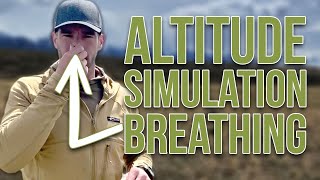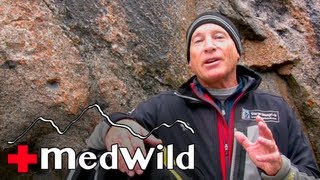
How To: Prepare Your Body For HIGH Altitudes No Matter Where You Are 🏔
 Did you know that you can prepare your body for high altitude physical endurance ANYWHERE?
Did you know that you can prepare your body for high altitude physical endurance ANYWHERE?
You don’t want to wait until you’re in the mountains to start adjusting & making preparations for high altitude. You can do it ANYWHERE!
Let’s talk about how!
———————————————
#highaltitudebreathing #altitudebreathing #fuelthepursuit

As beautiful as Colorado looks, coming from New Jersey and battling high blood pressure and pre diabetes, it sounds like a death sentence going to a high altitude city!! I’ll admire it from home
Man, truly appreciate this. I had a rough time in Big Bear, CA (8K el.) this past week. It felt like I could never catch my breath, my heart was racing, I had no appetite and I threw up. Weirdest and scariest feeling ever. I now know what I was experiencing. I love going up there, so I’ll work on these techniques. Godspeed!
I get the general idea of what you’re saying, I just wish you verbalised that better. Because it’s a lot of talking and not enough visual to go with it
thank you 👍
Thank you 🎉
3:30 Phase 1
6:19 Phase 2
Got to disagree with you. Performance at high altitude is limited by lower oxygen levels and improved by either breathing bottled O2 or raising hemoglobin levels through acclimatization, blood transfusions or use of a PED like EPO. Hyperventilation will take care of CO2 levels quickly but it’s the saturation of hemoglobin that permits improved athletic performance. Taking a drug like Diamox prior to traveling to altitude can help the body’s acid/base chemistry to adjust and make acclimating slightly easier. You might feel less breathless by training yourself to tolerate higher CO2 levels but your ability to perform aerobic exercise won’t be affected. People with chronic lung disease due to smoking can tolerate higher than normal CO2 levels and in fact their drive to breathe is driven by hypoxia. If they breathe air with high levels of O2, they will stop breathing.
Is it okay to use a mobile oxygen breathing apparatus, which is sprayed on, probably intermittently, on grasping moments, at high altitudes, say at 4000 mtrs mountain…? We can buy it at the pharmacy…
Going to try this out. Going from South MS to Glacier National Park to do some hikes and we are prepping now for the altitude change. Thanks!
3:57❤
Not a mountaineer, just in case.
Edited: Finished the vid. Well, I realized that it helps with daily physical activities.
Prolly not good idea to do this at altitude. Or can it still help?
Good information…thanks.Indians follow the technic of pranayama the yoga that helps breathing .It’s similar to what you suggested. I also have one experience I don’t know how scientifically it’s true or not..but while climbing on a hillock I wore a wet mask and one more dry mask on mouth covering the nose and that helped me breathe more comfortably during the climb. I Don’t know whether this technic help in high altitude mountain climb as there going to be a very cold temperature so the wet mask will work or not I don’t know. But I think you can research on this if you find any sense in this wearing a wet mask. Thanks
So interesting. I’m from Colombia and my parents were raised in the Andes mountains so they’ve never felt the elevation sickness. They moved away to raised us at a low elevation city and whenever they would bring us back to visit the mountains they would makes hold our breath before arrival and I never understood why. We never felt the elevation sickness thanks to that. I live in Seattle now and before I go to Colorado I do this exercises and thank god this works every time. After watching this video I understand now thanks!
Love the book and this video. Taking online Functional Breathing course this fall!
I’m planning to hike the Kinabalu Mountain, Sabah, Malaysia next month. I’ve been through it before about 20 years and it’s been hard indeed to acclimatise at higher altitude as I’ve been familiar with sea level conditions…
🙏🙏🙏
How do you manage altitude sickness if you are already at high altitude and you start having headaches?
hunk
Thanks for this video
Very interesting and will definitely try this along with buying an altitude training mask. I leave for CO in a week so I’m preparing for it now. Thanks for the advice!
Interesting. I’m planning to hike next month. I will try using these techniques. Thank you for sharing
I live in Colorado and got curious about what others do for our altitude I never realized how big of a difference the air was until I went to Florida for a week and the first thing I noticed was how EASY it was to breathe like I didn’t have to actually TRY to breathe it was just so easy and so not dry it’s a huge difference that I didn’t even notice
I’m so confused. Is there a simple 1. step 2. step video?
I thought that the concept of hypoxic training has been debunked.
Thank you so much for sharing this breathing Teknik. It had helped me to clime the Kilimanjaro. I come from Denmark and here is no mountain.
Is it ok to use this Teknik every day or only if I have to perform?
around how long before ascending should we start training this?
Is this technique safe to practice on a regular basis? Say, every 2-3 days to maintain CO2 tolerance levels?
There is no preparation for going high other than climb high sleep low to get the ball rolling. Medical camp on Denali 27yrs. 30 years in the Himal
I grew up in Laramie Wyo and to this day I have more red blood cells than the average person. Kinda 😎
Omg the minute I saw your graph saying that the % of oxygen lowers at higher elevation. Your credibility was gone ! There is always 20% of oxygen. The molecules are just further apart due to barometric pressure, making it harder to get the same number of oxygen molecules in your body. You should not be allowed to advise anyone. And I am not addressing the rest of this video.
Thanks for making this. My wife and I just bought a cabin in the Rocky Mountains (8500ft) this is helpful.
🎉 So prep x5 rounds,, then A.Simulation x5 rounds = entire exercise
How many times a day do you recommend doing this entire training exercise???
That 6 seconds is…..unpleasant. 😮
I love watching videos about mountain climbing… I don’t actually take mountain climb. I heard an interview w/Neal Beidleman (spelling?) yesterday and he was talking amount the changes in altitude acclimatization in recent years. Amazing. That is how I found your video.
I live at the elevation of about 1300 feet and I’m planning to go on a hike with the altitude of 11000 feet would that be an issue?
glad I found this..planning to go hike Mt Fugi.this is going to help alot…❤
I have asthma and this would’ve been a great video to watch before I went to Mexico which had the elevation 10x to what I’m used to! Lol
Even tho it isn’t high altitude, I have health issues that give me weird effects even in Salt Lake City [tachycardia, euphoria, headache]. I’m eager to use this acclimatize a bit easier! Also hoping this can improve my general exercise tolerance, since my conditions can make it difficult. 😊
[I know you aren’t a health professional & aren’t making any claims for edgecases, but I’m just using this based on the knowledge of my own body.]
Brother this is called Kumbhak in Yoga.
India we have classical reference in Hatha Yoga about holding the breath Which is called Kumbhak. The technic you manifested is an alternation of it..
Jerking while holding is strictly prohibited in Yoga its to be taken care in this technique too.
Love form India.
🎉😊
https://pubmed.ncbi.nlm.nih.gov/32267783/
Conclusions: Apnea training does not lessen HA-related symptoms in healthy adults traveling up to 5200 m. Larger studies using more challenging apnea protocols and at higher altitudes should be considered.
Did not get the frequency of the excercise. Is it 3 – 5 times a day, one week before high altitude exposure?
Thanks for the tip I’m going to try this. I’ve had trouble with altitude sickness while flying and I hope this makes it bearable.
Any ideas what you would do if you already have attitude sickness? I know going to lower altitude is first step but not finding much besides that to help. I got it really bad at just being over 6500ft i think bc i had heart or lung issue
If you do hold your breath longer and end up “gasping” yes you risk being light headed but your CO2 tolerance increases. Just sit or lay down. This is similar to wim hof method or tummo breadth
Is this backed by science ive been wanting to do altitude training for boxing but the highest i can train at is 200m. I’ve heard that the altitude masks that restrict airflow do not have the same effect as breathing less oxygenated air.
Same amount of oxygen at sea level as there is on the tip of my Everest. There’s just less pressure to push the pinto your lungs 🫁…..
Thank you my friend, I’m planning to go to Tibet this year and this i suppose Will help!
I want to vist Guanajuato , Mexico which is 6500 feet elevation so oxygen levels drop to 17%….should I be concerned ?